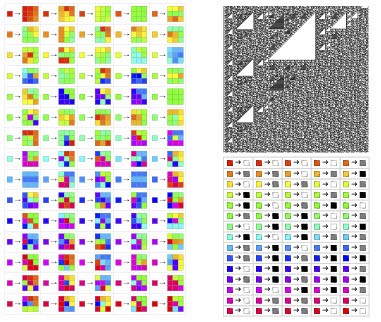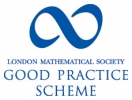EPSRC grant success in algebraic invariants in symbolic dynamics
 Reem Yassawi has been awarded a £336,713 EPSRC New Investigator Award for her project Computing algebraic invariants of symbolic dynamical systems. This project involves the study of ways to compute the automorphism group and the Ellis semigroup for low complexity symbolic dynamical systems, including those defined by combinatorial rules called substitutions.
Reem Yassawi has been awarded a £336,713 EPSRC New Investigator Award for her project Computing algebraic invariants of symbolic dynamical systems. This project involves the study of ways to compute the automorphism group and the Ellis semigroup for low complexity symbolic dynamical systems, including those defined by combinatorial rules called substitutions.
The project summary is as follows.
Euclidean symmetries are all around us in the natural world. Some of these symmetries are visible to the naked eye, such as the bilateral symmetry of a butterfly's wings. Other symmetries can be viewed via an electron microscope, such as the translation symmetries of a crystal.
More subtle to describe are the symmetries of quasicrystals, the existence of which was doubted for much of the last century. Quasicrystals are crystalline structures which do not have the translational symmetry of a normal crystal. Quasicrystals have a hierarchical structure: patterns and structures which appear on small scales are reproduced on larger and larger scales.
The first mathematical model of a quasicrystal was discovered by Sir Roger Penrose half a century ago. The Penrose tiling has reflectional symmetry, but it lacks a translational symmetry. A translationally symmetric tiling of two dimensional space must have either three-, four- or six-fold rotational symmetry. But the Penrose tiling has local five-fold rotational symmetry.
Penrose's tiling is simply a mathematical model, which is not necessarily guaranteed to exist in the natural world. But in 1982, Daniel Schechtman discovered that pentagonal symmetry actually appears in nature, while studying a rapidly chilled molten mixture of aluminium and manganese under an electron microscope. For his work, he received the Nobel prize in 2011.
Since the discovery of the Penrose tilings, mathematicians have discovered many ways to create such arrangements: There are infinitely many mathematical tilings of the plane which do not have translational symmetry. Confined to the kinds of building-blocks provided by nature, it is harder for scientists to create, or discover, these tilings.
Two questions arise, which are complementary to one another. The first is, when are two mathematical tilings somehow equivalent, and the second is, which of these mathematical tilings can be realised in the world around us? Answering the first question can guide scientists investigating the second question, for then, in trying to realise a mathematical tiling, they can ignore tilings known to be equivalent to ones that have already been realised.
Mathematicians study symmetry using abstract algebraic structures such as symmetry groups. We can characterize the structural properties of a tiling by associating to it algebraic constructions called invariants. If two tilings are equivalent, their invariants are the same. So, an understanding of the algebraic invariants of a tiling leads to some answers to the first question. In this project, we seek to gain a better understanding of some of these invariants, how symmetries manifest in them, and how to compute them, so that we can make progress in classifying mathematical quasicrystals.

